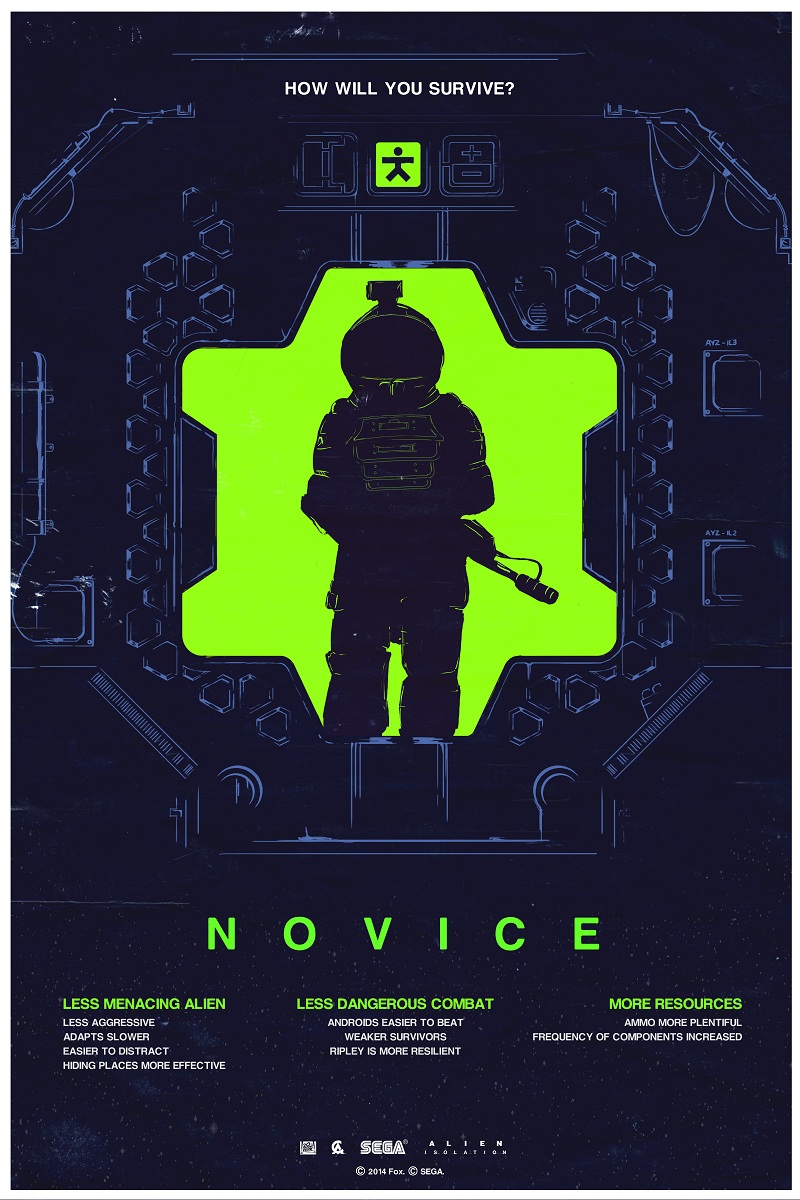In Alien: Isolation, the game’s multiple difficulty settings significantly shape the player experience by affecting enemy behavior, resource management, and the overall atmosphere of tension and fear. Here’s a detailed breakdown of each difficulty and how it alters gameplay dynamics:
Difficulty Levels Overview
1. Novice
– Description: The most accessible setting designed for new players.
– Enemy Behavior: The Alien is less aggressive and more easily distracted, allowing players to navigate the game world with less stress.
– Resource Availability: Abundant resources make crafting and survival simpler.
– Gameplay Implication: This setting encourages exploration and acclimatization to the game mechanics without the constant threat that characterizes Alien: Isolation.
2. Easy
– Description: A step up in challenge while still providing a relatively forgiving experience.
– Enemy Behavior: The Alien patrols in a more predictable manner and is less aware of the player’s presence, which can lead to opportunities for players to navigate without being detected.
– Behavior of Other Enemies: Androids and humans react but are less alert compared to harder difficulties.
– Gameplay Implication: Players can employ stealth with a bit more confidence, as the risk of encounters is mitigated.
3. Medium
– Description: Represents the standard experience of the game.
– Enemy Behavior: A balance is struck where the Alien is more reactive, increasing the challenge without being overwhelming.
– Behavior of Other Enemies: A moderate level of alertness among enemies fosters increased tension.
– Gameplay Implication: Players must refine their stealth strategies and resource management to survive effectively.
4. Hard
– Description: A challenging option for experienced players.
– Enemy Behavior: The Alien’s patrols become tighter, and it exhibits quicker reactions to player actions. The Alien can also return to search hiding spots.
– Behavior of Other Enemies: Androids act with high intelligence, similarly to a T-800, increasing the threat level.
– Gameplay Implication: Stealth becomes paramount; players must think critically about their movements and choices to avoid confrontation.
5. Nightmare
– Description: An extreme difficulty mode intended for players seeking a significant challenge.
– Game Features: This mode removes essential tools like the map and motion detector, disallowing HUD assistance. All enemies become tougher and more aggressive.
– Resource Availability: Resources are scarce, pushing players to conserve items judiciously.
– Gameplay Implication: Players face a grueling experience where they must rely solely on their wits and skills, making every decision crucial for survival. The tension is amplified as the AI adapts to player tactics, creating a dynamic and relentless threat.
Impact on Gameplay
Overall, the difficulty settings in Alien: Isolation influence several key gameplay elements:
– AI Complexity: Higher difficulties see more sophisticated enemy behavior, making players adjust their tactics frequently.
– Enemy Awareness and Intelligence: As difficulty increases, so does the alertness and efficacy of both the Alien and human/android enemies, promoting a need for stealth.
– Resource Management: Lower difficulty settings provide an abundance of resources, while higher settings force players to think carefully about every resource used.
– Environmental Challenges: Limited HUD features in Nightmare mode necessitate a heightened sense of awareness and spatial memory, further increasing tension.
Conclusion
In summary, players of Alien: Isolation can expect drastically different experiences across the difficulty spectrum. While lower difficulties provide room for exploration and experimentation, higher settings demand precision, patience, and tactical planning. Each mode encourages players to adapt their playstyle, understand enemy behavior intricately, and navigate the game’s atmospheric world with varying degrees of fear and strategy.






Leave a Reply